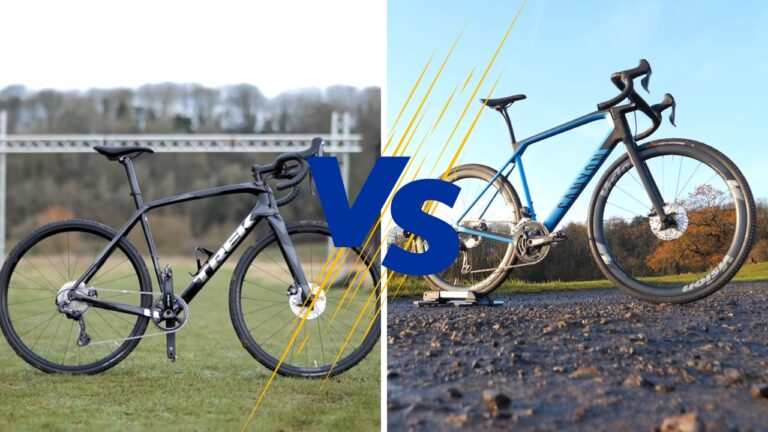Cyclocross and gravel bikes are two of the most popular types of bikes on the market today. Both offer a unique riding experience that is perfect for those who love to explore the great outdoors.
Both bikes are versatile, all-purpose bicycles that can be ridden on a variety of terrain. Let’s take a look at what these two types of bikes have to offer so that you can decide which one is right for you.
Cyclocross Vs Gravel Bike
The main difference between a cyclocross vs gravel bike is that a cyclocross bike is good for an off-road racing experience while a gravel bike is good for a multiday bike packing riding experience on all types of terrains. If you’re mostly riding on paved roads, then a cyclocross bike might be a better option since they’re typically lighter and more nimble.
However, if you anticipate spending most of your time riding on unpaved surfaces, then a gravel bike would be the better choice since they’re designed to handle rougher terrain.
So, what are the key differences between cyclocross and gravel bikes? For starters, cyclocross bikes tend to have narrower tires than gravel bikes. They also usually have Cantilever or Disc brakes, which provide more stopping power than traditional rim brakes.
Additionally, cyclocross bikes typically have a higher bottom bracket, which helps to keep your pedals clear of obstacles when riding through mud and sand. Gravel bikes, on the other hand, tend to have wider tires than cyclocross bikes. They also usually have disc brakes, which provide more stopping power and are less likely to get gummed up with mud and sand.
Additionally, gravel bikes typically have a lower bottom bracket, which helps to keep your pedals closer to the ground for stability on rough terrain. So, which is right for you? If you’re mostly riding on paved roads, then a cyclocross bike might be the better option.
However, if you anticipate spending most of your time riding on unpaved surfaces, then a gravel bike would be the better choice.
Cyclocross Bike Overview
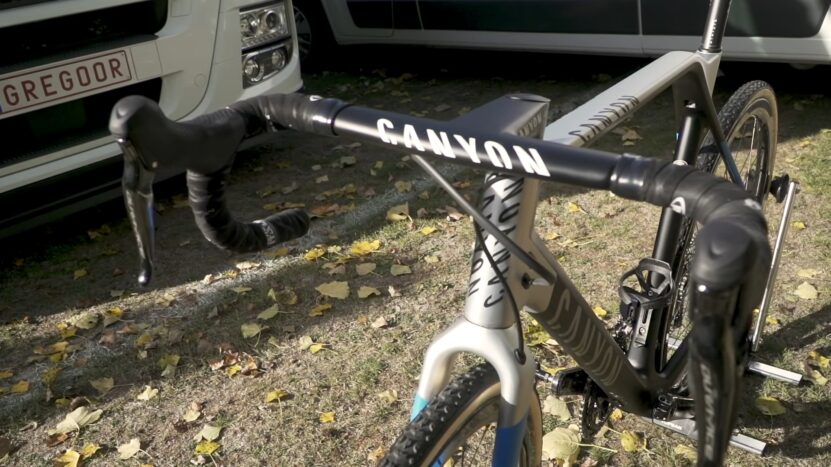
Cyclocross bikes are designed for racing on a variety of terrain, including grass, sand, mud, and even pavement. They are typically lightweight and nimble, with drop handlebars and knobby tires. Cyclocross is a type of bike racing that takes place on off-road courses, typically featuring a mix of pavement, dirt, and grass.
The bikes used in cyclocross are designed for maximum versatility and are often equipped with features such as knobby tires and multi-speed gearing.
Cyclocross races are typically held in the fall and winter months when conditions are typically too wet and muddy for road racing. The races are typically short (30-60 minutes) and very intense, with riders often having to dismount and run with their bikes over obstacles.
While cyclocross is traditionally a European sport, it has been gaining popularity in recent years in the United States. There are now cyclocross races held all over the country, and many major bike manufacturers offer cyclocross-specific bikes. If you’re looking for a challenge and an adrenaline-pumping good time, cyclocross is definitely worth checking out.
Cyclocross Bike Features
Cyclocross bikes are designed for racing on a variety of surfaces, including dirt, grass, and pavement. They typically have wider tires than road bikes, and they’re built with rugged frames and components that can withstand the rigors of off-road riding.
If you’re looking for a bike that can handle a little bit of everything, a cyclocross bike might be the right choice for you. Here are some of the key features that make a cyclocross bike unique:
Cyclocross Tire Width
Cyclocross bikes have wider tires than road bikes, typically in the range of 32-35mm. This gives them added traction and stability on slippery or uneven surfaces.
Cyclocross Bike Frame Materials
Most cyclocross bikes have frames made from aluminum or carbon fiber. These materials are lightweight and durable, making them ideal for racing.
Cyclocross Bike Components
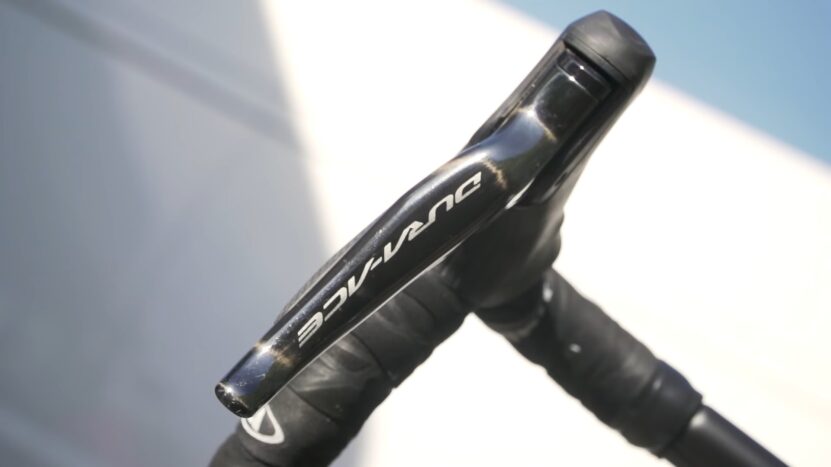
Cyclocross bikes often have Shimano or SRAM components, which are known for their reliability and performance. The bikes also typically have disc brakes, which offer superior stopping power in all conditions.
Cyclocross Bike Geometry
Cyclocross bikes have a slightly more upright riding position than road bikes. This gives you more control over technical terrain, and it makes it easier to shoulder the bike when you need to carry it over obstacles.
Gravel Bike Overview
The term “gravel bike” is a relatively new one, used to describe a growing category of bicycles designed for riding on unpaved surfaces. Gravel bikes are similar to cyclocross bikes, but they are built more for comfort and endurance than speed. They often have wider tires and a more upright riding position.
Gravel bikes are ideal for long rides on varied terrain, including dirt roads, singletrack, and even some paved surfaces. Gravel bikes are similar to road bikes in many ways, but they have a few key differences that make them more suited to riding on rough terrain.
For starters, gravel bikes usually have wider tires than road bikes, and they’re often equipped with disc brakes for better stopping power in all conditions. Gravel bikes also tend to have a more relaxed geometry than road bikes, which makes them more comfortable to ride over long distances. And while gravel bikes can be used for racing, they’re also great for exploring back roads and trails that are off the beaten path.
If you’re looking for a bike that can do it all, a gravel bike might be just what you’re looking for. But before you buy, there are a few things to keep in mind. Here’s a quick overview of everything you need to know about gravel bikes.
Gravel Bike Features
If you’re looking for a bike that can handle anything from fire roads to singletrack, a gravel bike is a perfect choice. Gravel bikes are versatile and fun, and they open up a whole new world of riding possibilities.
So whether you’re looking to explore your local trails or take on an adventure race, a gravel bike is the way to go. Here are some of the key gravel bike features that make them so versatile and fun to ride:
Wider Tires
Gravel bikes typically have wider tires than road bikes, ranging from 30c to 42c. Wider tires provide more stability and traction, making them ideal for riding on loose or uneven surfaces.
Lower Gear Ratios
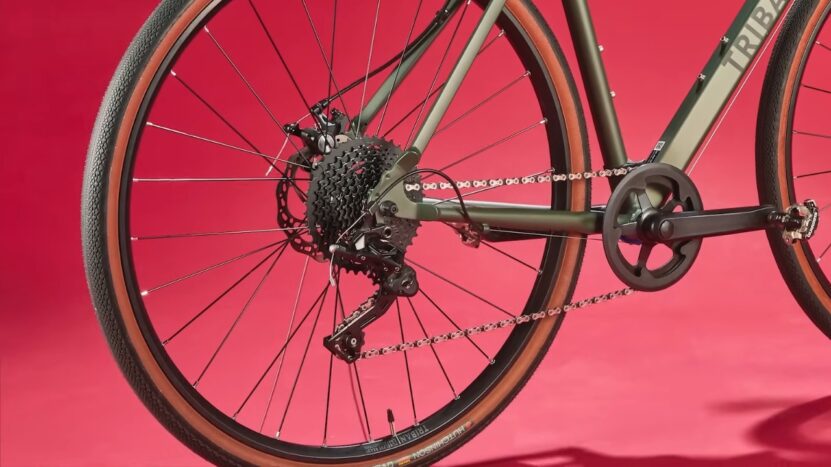
Gravel bikes usually have lower gear ratios than road bikes, making them easier to ride uphill. Gravel bikes typically have a cassette with a range of 11-32t or 11-34t, giving you the low gears you need for climbing.
More Upright Riding Position
Gravel bikes have a more upright riding position than road bikes, which makes them more comfortable to ride for long periods of time. Gravel bikes also typically have wider handlebars for improved control on loose or uneven surfaces.
Disc Brakes
Gravel bikes usually have disc brakes, which offer superior stopping power in all conditions. Disc brakes are especially useful in wet or muddy conditions when traditional rim brakes can become less effective.
These are just some of the key gravel bike features that make them so versatile and fun to ride. So if you’re looking for a bike that can handle anything from fire roads to singletrack, a gravel bike is a perfect choice.
Geometry Difference
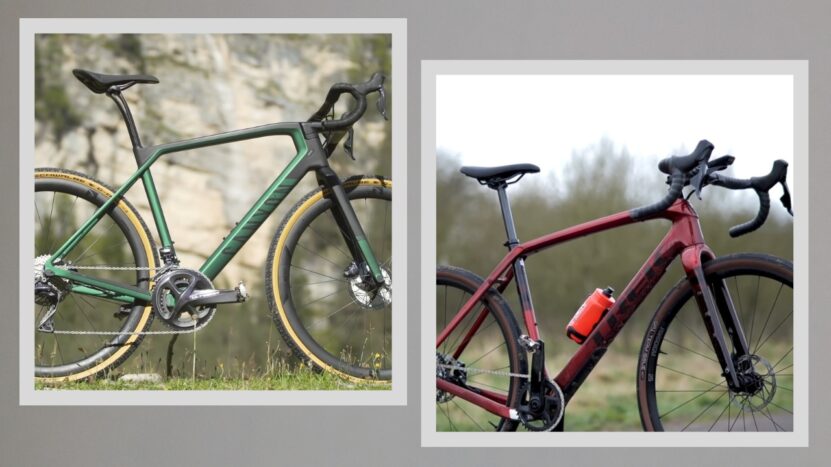
Geometry difference is one of the most important factors that differentiate between a cyclocross and gravel bike. Cyclocross bikes have a shorter wheelbase and higher bottom bracket than gravel bikes. This geometry makes cyclocross bikes more agile and quicker to change directions, while gravel bikes are more stable and better suited for long-distance riding.
Cyclocross bikes also have a higher headtube to provide better visibility in mud and dirt, while gravel bikes have a lower headtube for aerodynamics. Finally, cyclocross bikes tend to be heavier than gravel bikes due to their sturdier construction.
So, if you’re looking for a bike to race on mud and dirt, a cyclocross bike is the way to go. If you want a bike that’s more comfortable for long-distance riding on paved and unpaved roads, then a gravel bike is the better choice.
Storage Difference
When it comes to storage, there is a big difference between cyclocross and gravel bikes. Cyclocross bikes are designed to be lightweight and easy to carry, so they often have smaller storage capacity. Gravel bikes, on the other hand, gravel bikes are designed for longer rides and typically have more room for storing gear.
If you’re planning on doing a lot of riding, or if you need to carry extra gear with you, a gravel bike is the better option. However, if you’re just looking for a light and fast bike that’s easy to transport, a cyclocross bike is a good choice.
Gearing Difference
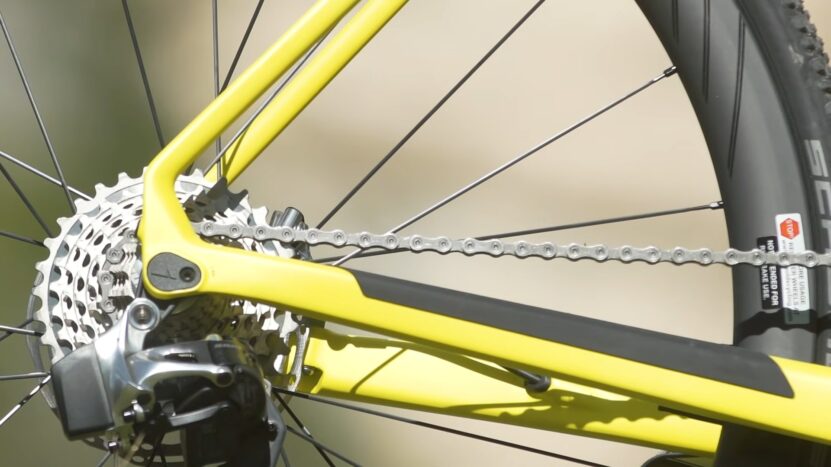
Cyclocross bikes typically have narrower gear ranges than gravel bikes. This is because they are designed for racing, and the courses are generally not as varied as those you would find on a gravel ride. As a result, cyclocross bikes will often have fewer gears in the front, and more in the back. This gives you more of climbing gear, which can be helpful on hilly courses.
Gravel bikes, on the other hand, are designed for longer rides on more varied terrain. As a result, they will often have wider gear ranges, giving you more options for both climbing and descending. This can be helpful if you plan on doing a lot of both on your rides.
Wheel and Tire Size Difference
Cyclocross bikes typically have smaller wheels and tires than gravel bikes. This makes them more agile and better suited for maneuvering through tight spaces on a cyclocross course. However, it also means that they’re not as stable at high speeds and can be more difficult to handle on rough terrain.
When considering which mountain bike wheel size fits your bike well, it’s essential to keep in mind the trade-off between agility and stability.
Gravel bikes, on the other hand, have larger wheels and tires. This makes them more stable and better suited for riding on rough terrain. However, it also makes them less agile and more difficult to maneuver through tight spaces.
Comfort and Stiffness Difference

When it comes to comfort, gravel bikes are generally more comfortable than cyclocross bikes. This is because they have a longer wheelbase and lower bottom bracket, which puts the rider in a more upright position. Cyclocross bikes are more aggressive and put the rider in a more hunched-over position, which can be uncomfortable for long rides.
When it comes to stiffness, cyclocross bikes are generally stiffer than gravel bikes. This is because they have a shorter wheelbase and higher bottom bracket, which makes them more responsive to pedaling input.
Gravel bikes have a longer wheelbase and lower bottom bracket, which makes them more forgiving and easier to control.
In terms of weight, cyclocross bikes are usually lighter than gravel bikes. This is because they have a shorter wheelbase and higher bottom bracket, which makes them more agile.
Gravel bikes are heavier because they have a longer wheelbase and lower bottom bracket, which makes them more stable.
Conclusion
If you’re mostly riding on paved surfaces with the occasional off-road jaunt, then a gravel bike is probably a better option. They’re typically more comfortable and have wider tires for a smoother ride.
If you’re planning on doing a lot of off-road riding, then a cyclocross bike is probably the better choice. They’re designed to handle rougher terrain and are more nimble and agile than gravel bikes.

